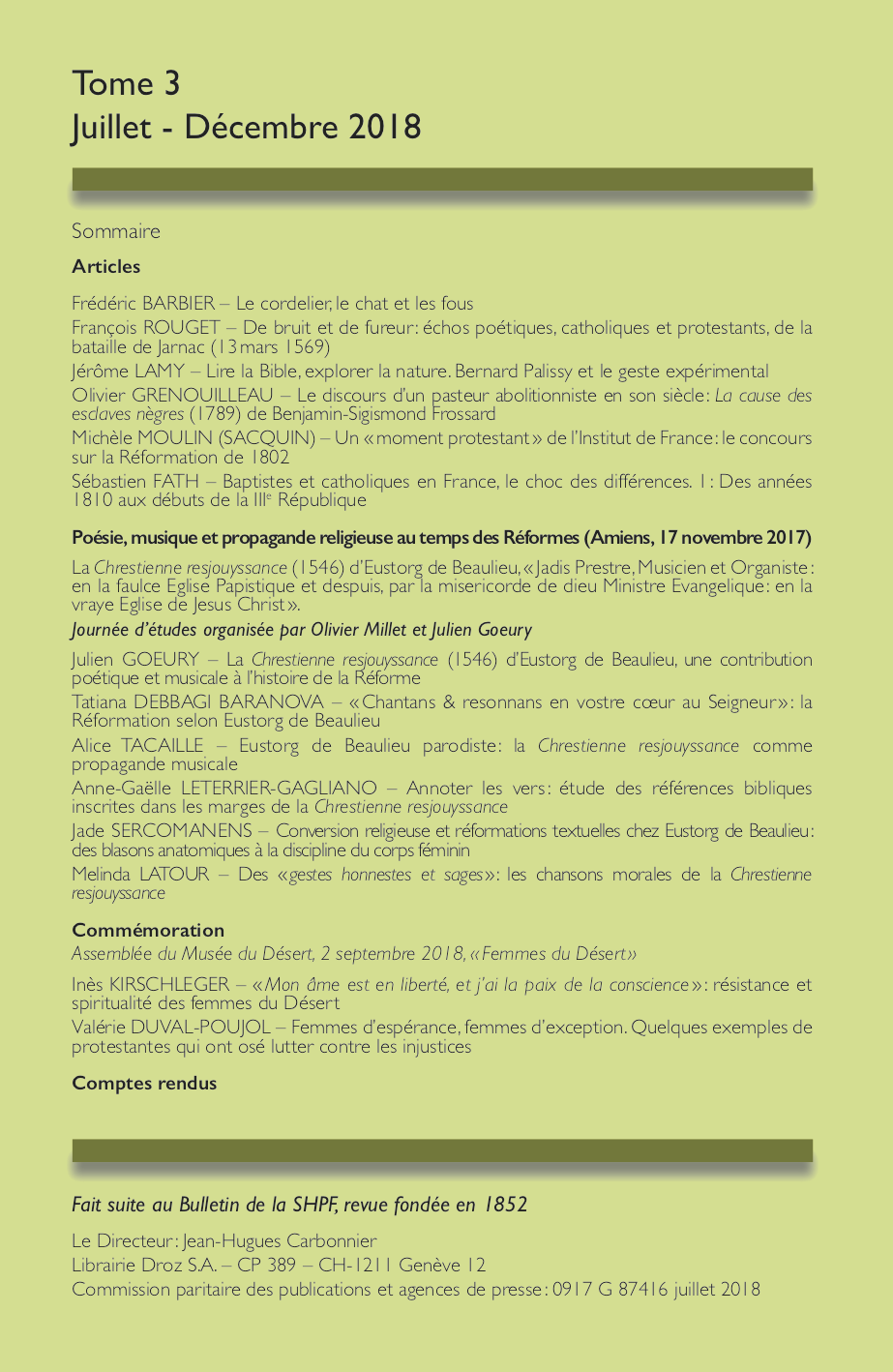Conversion religieuse et réformations textuelles chez Eustorg de Beaulieu :
des blasons anatomiques à la discipline du corps féminin
Abstract
The first edition of L’Espinglier des filles was published in 1548, and presented itself as a manual for young women instructing them for their lives as married women. With this book Eustorg de Beaulieu joined a humanist pedagogical tradition that can already be seen reflected in his Chrestienne resjouyssance. Against the background of his own conversion nearly a decade earlier, its publication in 1546, when Beaulieu was a minister in the Pays de Vaud, can be seen as a stimulus for the religious “conversion” of popular and secular texts. The question of the way women ought to conduct themselves and to be instructed is briefly addressed in the volume, in particular in two songs, but especially in the versified letter to Marguerite de Saint-Simon. This pedagogical interest is at the basis of a spiritual “reconversion” of Beaulieu’s literary activities, later crystallised in L’Espinglier des filles where the tradition of the anatomical blazons of the feminine body are reoriented and other influences can be perceived as well. As such, the work filled a gap in the didactic literature of the early Reformation.
